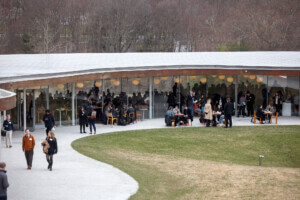Although the Architecture Billings Index (ABI) continues to slump in the face of a COVID-induced recession, one relatively bright spot has been the strength of the multi-family residential sector. However, it seems runaway timber costs and shortages may be clamping down on single-family home construction.
According to the latest National Association of Home Builders (NAHB)/Wells Fargo Housing Market Index (HMI) report released yesterday, March 16, prices have risen and inventory has shrunk. NAHB chairman Chuck Fowke reportedly attributed the decrease in demand to soaring softwood lumber prices.
The HMI in March dropped to 82, down from 84 in February of 2021. According to the NAHB, the index, much like the ABI, is a composite figure of “Present Single-Family Sales, Single-Family Sales for the Next Six Months, and Traffic of Prospective Buyers,” which are each individually rated by a panel of builders, converted into a number, and weighted by season. Apart from a slight increase last month, the HMI has been on a downturn as of late, driven by the aforementioned timber sourcing issues, which are being exacerbated, ironically, by a building boom and tariffs.
As the Wall Street Journal reported, lumber futures have shot up to over $1,000 per 1,000 board feet from only $370-per-1,000-board-feet exactly a year ago, and timber pricing service Random Lengths said that orders for engineered wood products such as flooring and I-beams are backed up for months.
The shortage has gotten so bad that last week, a consortium of 37 real estate, manufacturing, and manufacturing trade organizations lobbied the Biden administration for direct action to boost timber production. In their letter dated March 12, the group pleaded for the administration to re-examine the timber supply chain to pick out causes for the high prices and see if federal intervention could be taken. One facet the new administration could directly change is the 24 percent tariff imposed on Canadian softwood imports the previous Trump administration put in place in November of 2017. On February 18, the Associated General Contractors of America also sent a letter to the Biden administration asking for relief, arguing that rather than encouraging domestic timber production, the tariffs have continued to hurt the industry.
Of course, tariffs aren’t the only cause of the ongoing shortages and high wood prices. Mills and engineered wood product factories shut down at the start of the COVID pandemic in anticipation of a decrease in demand that never came. With more people stuck at home than ever, remodeling and expansion projects were, and continue to be in high demand, and mills are still unable to hit their production targets. As more Americans get vaccinated, it’s expected that the demand for timber will only increase, eventually driving prices even higher, and according to Bloomberg, U.S. imports will need to increase by 14–to–15 percent to hit demand this year.











